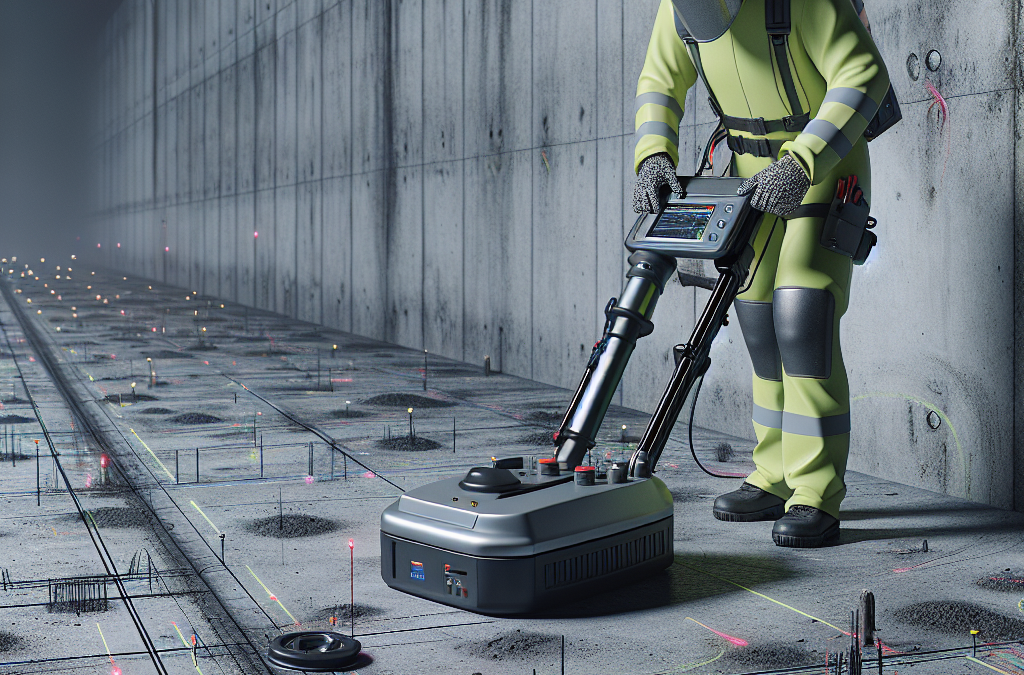Construction and renovation projects in Melbourne involve digging, drilling, and cutting into concrete structures. Without a comprehensive understanding of what lies beneath the surface, these activities can lead to costly accidents, delays, and even endanger lives. Concrete scanning is the solution to this problem, offering insights into what’s hidden beneath the layers of concrete.
Understanding Concrete Scanning
Concrete scanning is a non-destructive testing method that employs advanced technology to identify objects or structures within concrete. It provides vital information about the composition, thickness, and depth of materials beneath the surface without the need for invasive procedures.
The Importance of Concrete Scanning in Construction
Safety Precautions: Ensuring Worker Safety and Project Integrity
The primary reason why concrete scanning is indispensable in construction projects is safety. Melbourne’s busy construction sites can be hazardous if workers are unaware of what’s buried beneath the concrete. Scanning helps avoid accidents by detecting rebar, pipes, or other obstructions.
Cost-Efficiency: Avoiding Delays and Financial Losses
Concrete scanning in Melbourne can save construction companies in Melbourne a significant amount of money. By identifying hidden objects, it prevents damage to equipment, reduces repair costs, and minimizes project delays caused by unexpected obstacles.
Types of Concrete Scanning Technologies
Concrete scanning relies on various technologies, each with its strengths and applications. Here are some common ones used in Melbourne:
Ground Penetrating Radar (GPR): Versatile Detection Technology
GPR is a widely used technology in Melbourne’s construction industry. It uses electromagnetic waves to create images of objects within concrete. GPR is versatile and can detect various materials, making it suitable for a range of applications.
Electromagnetic Induction: Locating Metal Elements
Electromagnetic induction is effective at detecting metal objects within concrete. It’s commonly used to locate reinforcing bars (rebar) and metal pipes, crucial information for construction projects.
Ultrasonic Testing: Thickness Measurement and Voids Detection
Ultrasonic testing involves sending sound waves through concrete and measuring their reflection. This technology is excellent for determining the thickness of concrete and detecting voids or delaminations.
How Concrete Scanning Works
GPR Process: Creating Images Below the Surface
Ground Penetrating Radar operates by sending electromagnetic pulses into the concrete, which bounce back when they encounter objects or boundaries. The system then interprets these signals to create images of what’s beneath the surface.
Electromagnetic Induction Process: Detecting Metal Structures
Electromagnetic induction involves inducing an electromagnetic field around a concrete surface. When the field interacts with metal objects, it generates electrical currents that can be detected and mapped, revealing the presence and location of metal structures.
Common Applications of Concrete Scanning
Concrete scanning has a wide range of applications in Melbourne’s construction and renovation projects:
Pre-construction Site Assessment: Aiding in Planning and Preparation
Before construction begins, concrete scanning helps assess the site’s suitability and identify potential obstacles, ensuring a smoother project execution. It provides valuable insights that guide project planning and safety measures.
Renovation and Remodeling: Safeguarding Existing Structures
During renovation projects, understanding the existing structural elements is crucial to avoid damage and ensure the remodel aligns with the current layout. Concrete scanning ensures the integrity of the existing structure and prevents costly mishaps.
Detecting Utility Lines: Preventing Accidents During Excavation
In Melbourne, concrete scanning is vital for detecting buried utility lines, preventing accidents during excavation work. Knowing the precise location of utility lines helps avoid costly damages and service disruptions.
Choosing the Right Concrete Scanning Service
When considering concrete scanning in Melbourne, it’s essential to choose the right service provider. Look for experience, reputation, and the technology they use to ensure accurate results. Experienced professionals can provide detailed scans and expert advice to support your construction or renovation project.
Benefits of Hiring Professionals
Accuracy: Minimizing Errors
Professional concrete scanning services in Melbourne have the expertise and equipment needed to provide highly accurate results, minimizing the risk of errors. Their proficiency ensures that you receive precise information about the conditions beneath the concrete surface.
Time Efficiency: Quick and Reliable Results
Hiring professionals can save time on your construction or renovation project, as they can quickly and efficiently scan the concrete, providing you with the information you need to move forward. Their speed and reliability contribute to project efficiency and timely decision-making.
DIY vs. Professional Concrete Scanning
While some DIY enthusiasts may attempt concrete scanning, it’s often best left to professionals in Melbourne. The complexity of the technology, the potential risks involved, and the need for specialized equipment make professional services a safer and more reliable choice.
Conclusion
In conclusion, concrete scanning is a crucial step in construction and renovation projects in Melbourne. It ensures safety, cost-efficiency, and precision, making it an indispensable tool for professionals and DIY enthusiasts alike. By understanding the technology and applications of concrete scanning, you can make informed decisions that contribute to the success of your projects in this vibrant Australian city.


Recent Comments